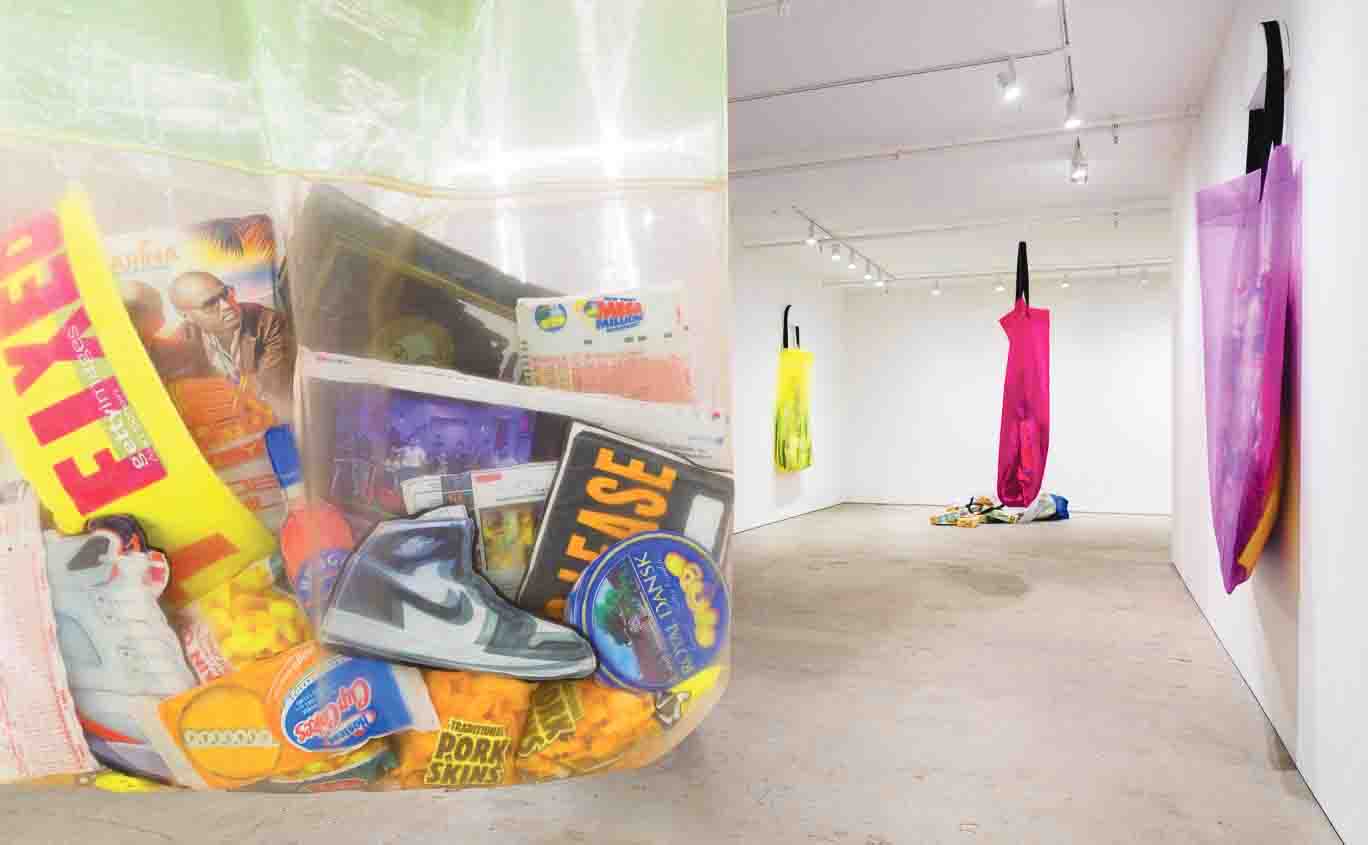
Etienne Frossard
In “Mercado,” the most recent exhibition by Lucia Hierro ART ’13, the Dominican-American conceptual artist and Yale School of Art alumnus, tears down the conventions about what constitutes art with a series of super-sized, polyorganza shopping bags, filled with slim felt pillows printed with images of consumer goods, ranging from supermarket circulars to Goya beans.
“Mercado,” Hierro’s first solo exhibition in New York City, opened at the Elizabeth Dee Gallery in Harlem on Jan. 27 and will run through Feb. 24. Akin to Hierro’s previous work, the show harnesses a multitude of techniques, including digital media, installation art and color theory, to engage its audience in a dialogue about issues of class, culture and gender. Many of the soft, sculptural assemblages represent mementos from Hierro’s childhood in New York’s predominantly Dominican and lower-class Washington Heights and Inwood areas. This past Saturday, seated among her new works, Hierro discussed her archetype’s conception and development with Larry Ossei-Mensah, the exhibition’s curator.
“It came to me a little over a year ago, but according to my sketchbook, it was a lot longer than that,” Hierro said.
Hierro was flipping through an old notebook when she came across a drawing of a collection of bags, with the caption “nude suitcase,” a reference to Marcel Duchamp’s 1912 cubo-futurist painting “Nude Descending a Staircase.” The artist then sought to bring the bags to life. She took the soft, sculptural, still-life images — fashioned from baby crib mattresses she’d been working on — and adapted them to fill the bags. Hierro made small versions first, tucking them into the corners of her shoebox studio in the Bronx until Ossei-Mensah discovered them and encouraged her to pursue the concept.
“There was a lot of me doubting, and him being like, ‘Do this,’” Hierro said. “‘Go bigger.’”
Ossei-Mensah works primarily with emerging artists, conversing with them frequently and pushing them to cultivate their work. He said his primary contribution to the exhibition was as a sounding board for Hierro’s ideas.
“If we did a side-by-side comparison in terms of [Hierro’s] growth over the year, it’s amazing,” Ossei-Mensah said. “With the [baby crib] mattresses, if you were familiar with it you would connect with it. If you weren’t familiar with it, you wouldn’t consider it as much. With [the bags], just the pure scale forces you to consider the object.”
At a towering 68 by 51 inches and saturated with sugary pastels, the works do command attention. With bags both mounted to the wall like canvases and suspended from the ceiling by thin plastic wire, Hierro and Ossei-Mensah present a single object as both two- and three-dimensional.
One anomalous bag, colorblocked in white and aquamarine, lies horizontal on the floor, filled to bursting with blown-up replicas of Embajador Chocolate. “Ambassador Chocolate,” was the first packaged product from the Dominican Republic to become internationally popular. The family that owned it, the Cortezes, had a vision for a company that would put Dominicans on the map, Hierro explained.
Much of Hierro’s literal and figurative personal fabric is woven into the plush, tactile assemblages. One bag, in addition to containing printouts of Air Jordans and baseball cards, displays a screenshot of a YouTube video featuring Hierro’s father, a merengue singer. Another, titled “MamaEdita,” is filled with products, including Vicks VapoRub and Pond’s Cold Cream, that the family used to shuttle from the United States to the artist’s grandmother in the Dominican Republic.
Then one day, a young woman pointed to the printout of Silicon Mix, a hair conditioning treatment, in “MamaEdita,” and said she used it, too. In this way, Hierro’s works have a certain duality: They invoke shared experiences just as much as they reference the artist’s own story. Ossei-Mensah believes that, in addition to the gallery’s Harlem location, the community-based aspects of Hierro’s work become more important.
“What do these interactions do to a young person, to a person who doesn’t feel that they’re always included in the discourse?” Ossei-Mensah said. “What will they consciously connect to, and subconsciously connect to, months from now?”
Hierro is currently an artist in residence at the Red Bull House of Art in Detroit. A collective show featuring her work will open there on April 6.
Brianna Wu | brianna.wu@yale.edu







